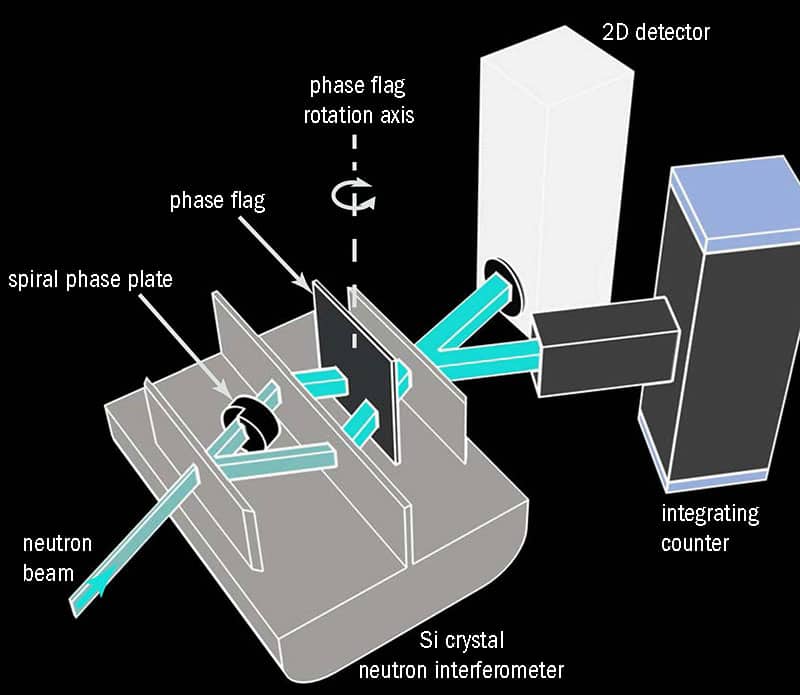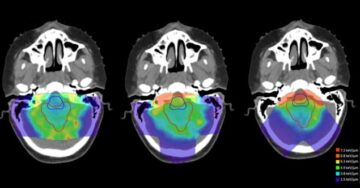The first neutron interferometer built from two separate crystals rather than one could lead to more advanced measurements of quantum effects, including in gravitational fields. Developed by researchers at the TU Wien, INRIM Turin and ILL Grenoble, the new interferometer is both more sensitive and more flexible than its predecessors, and could become a testbed for measuring distances and angles with very high resolution.
Thanks to wave-particle duality – one of the cornerstones of quantum mechanics – neutrons exhibit a wave-like diffraction pattern when they scatter off a material. Neutron interferometers exploit this property. When neutrons are fired at a crystal, the neutron wave splits into two portions. When these waves are then allowed to combine, they interfere with each other, producing a characteristic diffraction wave pattern that reveals information about the material’s structural and magnetic properties.
“The principle of the interferometer is similar to the famous double-slit experiment, in which a particle is shot at a double slit in a wave-like manner, passes through both slits simultaneously as a wave and then superimposes on itself, so that afterwards a characteristic wave pattern is created at the detector,” explains team member Hartmut Lemmel of the TU Wien. “But while in the double-slit experiment the two slits are only a minimal distance apart, in the neutron interferometer the particles are split into two different paths with several centimetres in between.”
Limited size
Neutron interferometers have been employed in fundamental physics research for many years. However, Enrico Massa of the INRIM, who led the new study, explains that their size – and therefore their sensitivity – has been limited because they only work if carved from a single piece of crystal. This is because the quantum superposition in the devices is extremely fragile and sensitive to tiny misalignments, vibrations, displacements or rotations between the interferometer parts. Because the crystals themselves cannot be made very big, researchers have been trying since the 1990s to make neutron interferometers from two separate crystals that could be placed a greater distance from each other.
Increased sensitivity to weak neutron interactions
Massa and colleagues have now achieved just this by modifying an X-ray interferometer technology created at the INRIM to accurately determine the lattice parameter of separated silicon (Si) crystals. The new apparatus comprises two Si crystals mounted on a piezo-driven tip-tilt platform, which allows the pitch and yaw angles between the crystals to be adjusted on smaller than nanoradian scales.

How to put neutrons into a twist
“Such separate crystals allow for long and spaced interferometric ‘arms’, which will improve the interferometer’s sensitivity to weak neutron interactions – for example with the gravitational field,” explains Massa. “This will give room to place bigger pieces of equipment or samples to be imaged inside the interferometer,” he tells Physics World. “What is more, and from a technological viewpoint, split-crystal interferometry is a testbed for the metrology of macroscopic distances and angles with picometre and picoradian resolution.”
The TU Wien-INRIM-ILL researchers say they are now working on a next generation of split-crystal interferometers that can operate simultaneously with neutrons, X-rays and visible photons. The crystal separation in these new devices will be pushed to distances as large as 1 metre.













